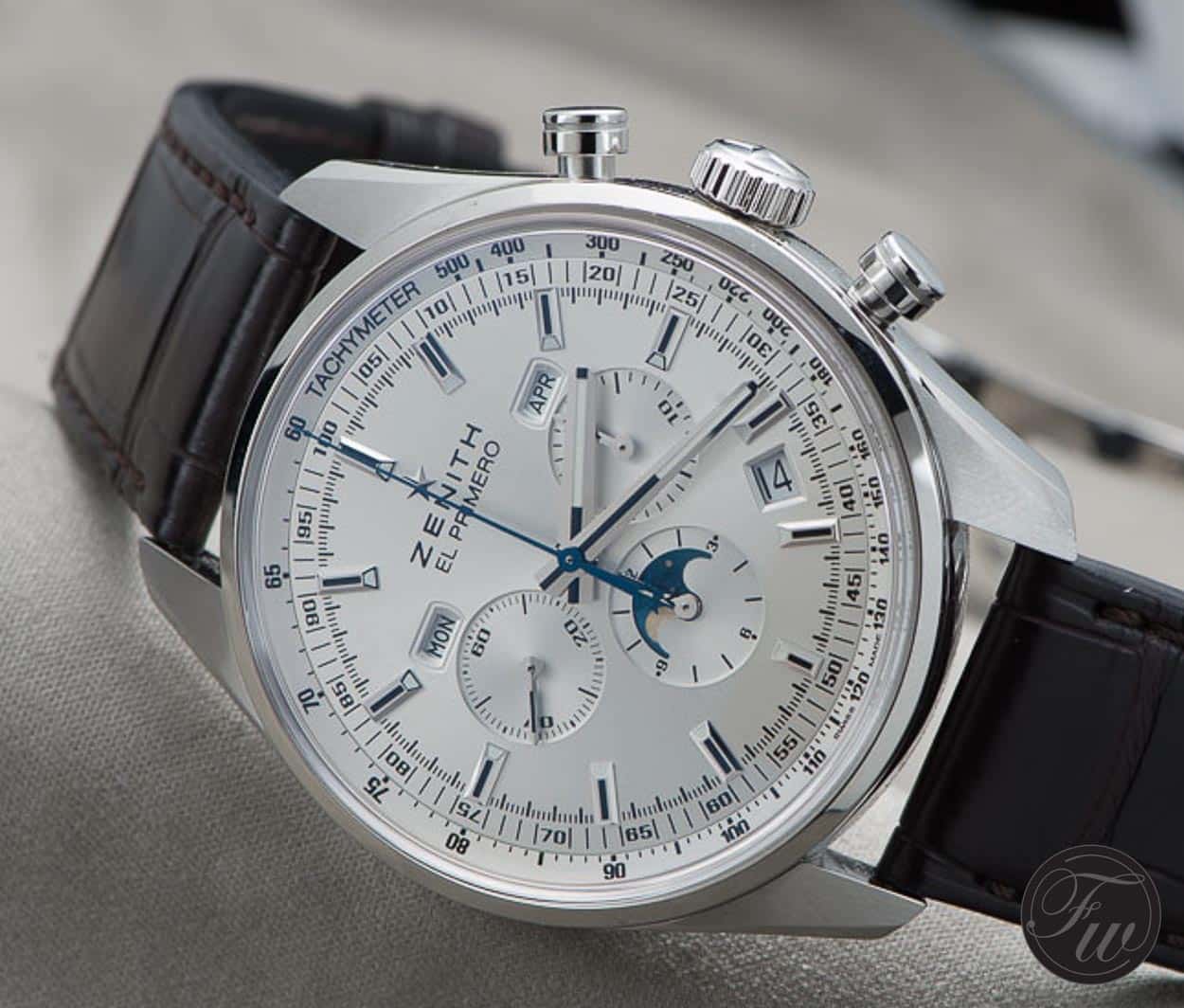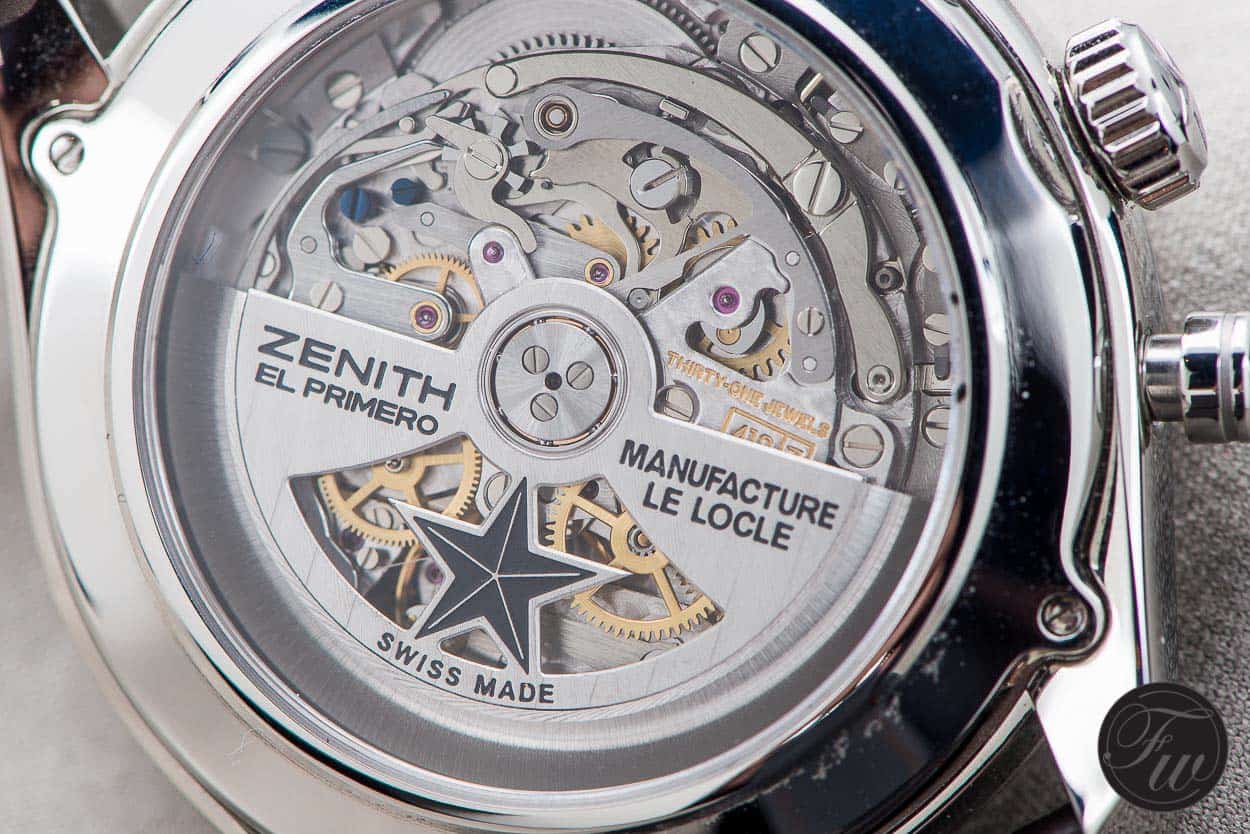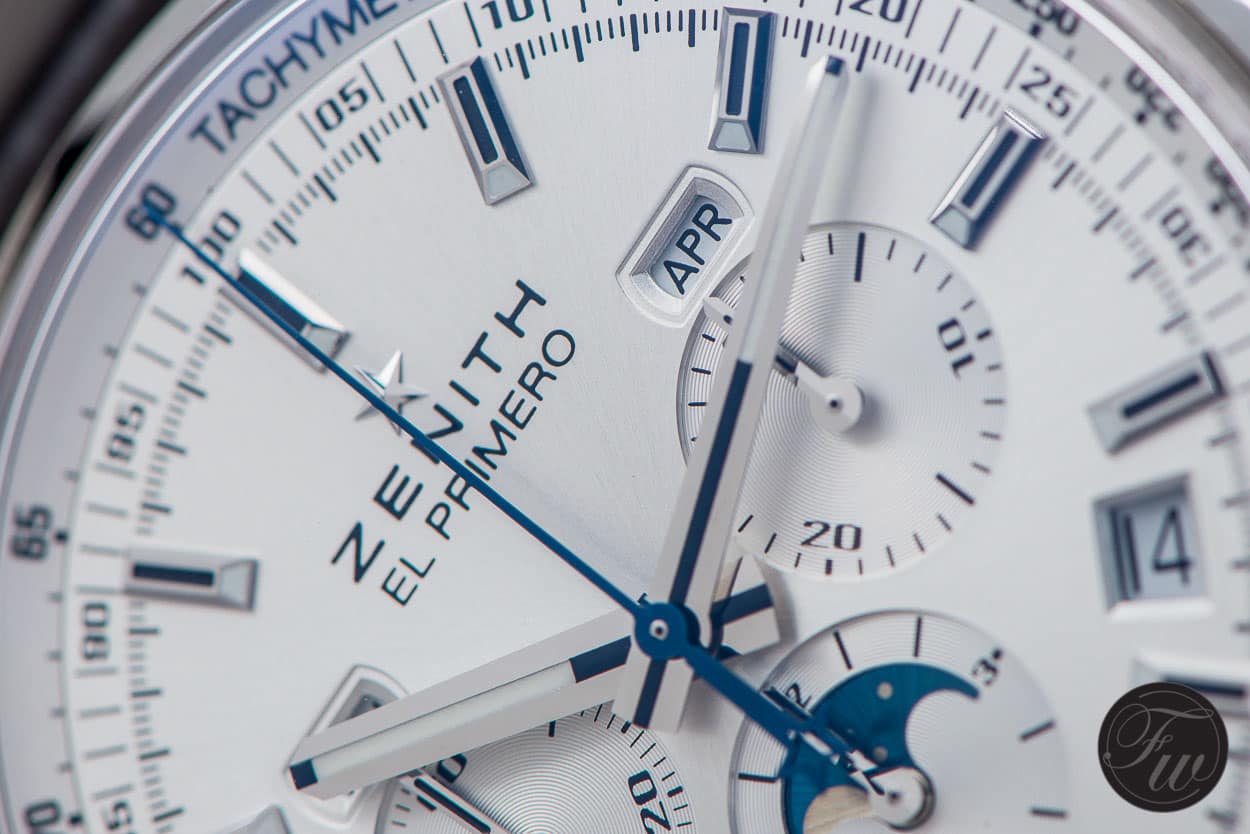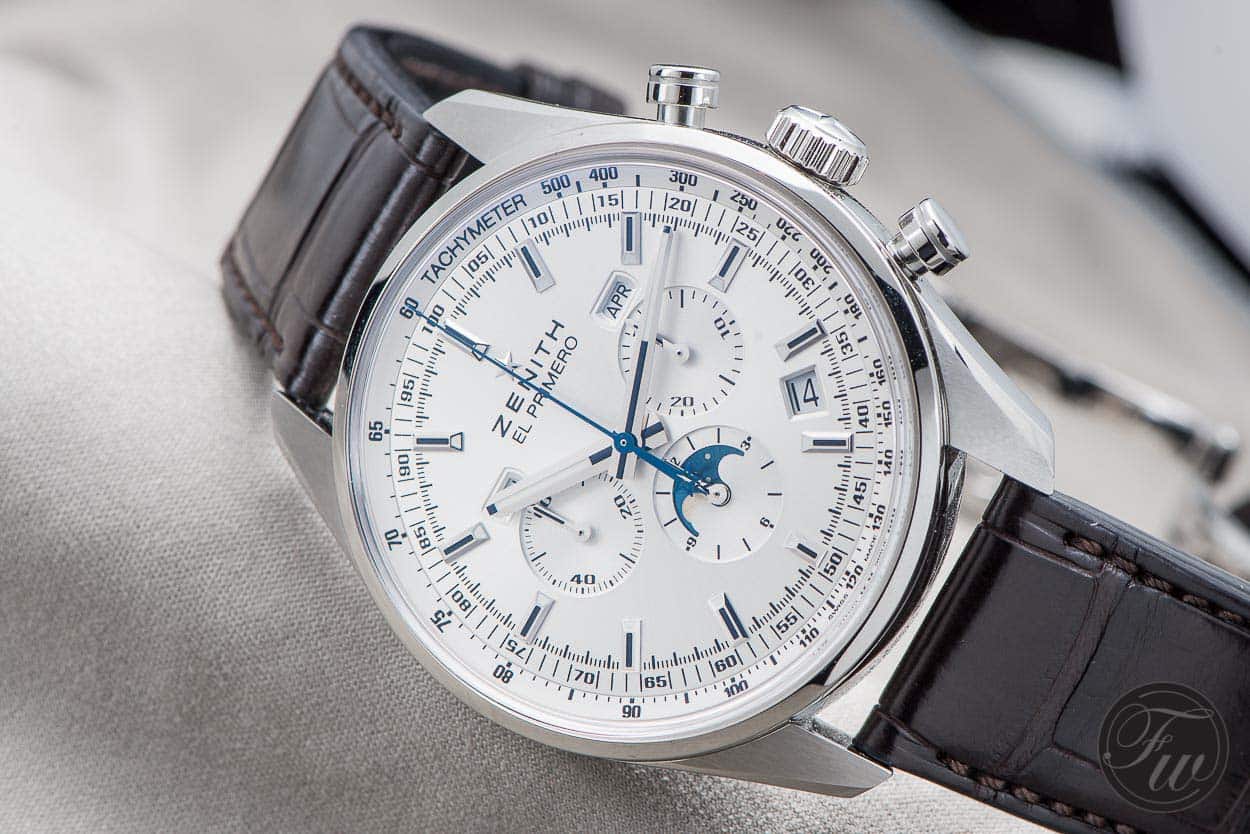Zenith El Primero 410 Review
One of my first encounters with the Zenith El Primero movement was in the late 1990s, when my watchmaker picked up a watch of mine wearing his EL Primero Chronomaster in gold. This model, probably reference 17.0240.410/01.C495, had a full calendar on board including a moon phase indicator.
The Zenith El Primero was one of the first automatic chronograph watches that was introduced back in 1969. Ever since, Zenith has been developing and enhancing their flag ship chronograph caliber. You might have missed our visit report of the Zenith manufacture in Le Locle (click here), as I already have written it there, but the level of craftsmanship in the Zenith El Primero movement was pretty amazing to me. Everything is done in-house about this movement, since the early days of this automatic chronograph caliber. This also means that Zenith is not only capable of using it as a base caliber for all sorts of complications, but also that they are able to service and repair it without having to depend on third parties. On another note, you are probably already aware of it but I think it is worth mentioning that Zenith also used to provide the El Primero movement to other companies such as Rolex (Daytona, 1988 – 2000), Movado, TAG Heuer and Ebel (Don Johnson was wearing one of these in Miami Vice).
Zenith El Primero 410
But let’s get back to the Zenith El Primero 410 (reference 03.2091.410/01.C494). The El Primero is a bit confusing at times, as it is not only being used to indicate the movement caliber, but is also the name of the collection within Zenith. However, Zenith collections that are not part of the El Primero line can still use El Primero movements. For example, the Captain collection also includes watches that use the El Primero movement. Mr Magada (CEO) of Zenith told me during our visit however, that this is something to be addressed in the near future.
The Zenith El Primero 410 refers to the El Primero collection and to the caliber El Primero 410 movement. So you are safe with this model when it comes to the naming of the watch and movement. The Zenith El Primero 410 movement is a fast ticking movement, with 36,000 beats per hour and has a column wheel mechanism for the chronograph. This fast ticker is twice as fast as a hand-wound Speedmaster Pro for example. Only few other watches use a bph above 28800, but Zenith has been doing this since their very first El Primero A386 model.
These fast ticking movements are easy to recognize due to the sweep of the second hand, that goes very smoothly (10bps) around. Is a movement with a 36000bph more accurate than, let’s say, a movement that ticks at 18000boh or 21600bph? After all, a 36000bph frequency of the movement’s escapement is less sensitive for external influences. The answer is that this doesn’t have to be the case, as it all depends on the circumstances of course. With a fast ticking movement, lubrication is crucial and one of the reasons that a lot of other brands didn’t want or didn’t succeed to use this high frequency. Zenith is one of the few brands that is successful with their 36000bph movements though. The Zenith El Primero 410 caliber consists of no less than 390 components.
The Zenith El Primero 410 is basically a chronograph movement added with day, date, month and moon phase functions. A full calendar display. Although you’d say that this would result in a cluttered dial, Zenith did a great job in designing well balanced dial that is very easy on the eyes. The day and month indicator are positioned at 10 o’clock and 2 o’clock and the moon phase indicator is placed at the lower sub dial of the chronograph. As always, the Zenith El Primero 410 has the date positioned between 4 and 5 o’clock, without disturbing either a sub dial or an hour marker. You could say this is the classic El Primero lay-out.
The silver dial has a sun-ray finish and has beautifully applied hour markers. A tachymeter scale is printed on the dial which enabled Zenith to use a very slim bezel, so the dial is relatively large for this 42mm watch case. The blue chronograph second hand corresponds nicely with the blue of the moon phase disc. The rest of the dial is very toned down when it comes to colors. Silver hands, silver hour markers and a silver dial. You’d say that it isn’t probably the best dial to read, but since Zenith used faceted hands and hour markers, there is enough contrast to be able to tell the time quickly. The hands and hour markers are applied with Super Luminova.
There are no guards to protect the pushers and crown, thank you! It makes the case look very elegant and easy to grasp the crown for setting the watch.
Zenith has put an alligator strap on this El Primero 410 with rubber lining on the inside. The watches comes with a nice folding clasp.
I already had a weak spot for the Zenith El Primero and visiting the manufacture last November made me even weaker for this brand. My watchmaker is still very fond of his Zenith El Primero watches and actually everyone I talk to who bought one seems to be super enthusiastic, whether it is a new model or a vintage model. The Zenith El Primero 410 could be my personal pick as well, but a vintage A386 or a new El Primero 36000VPH (with the colored sub dials) are also high on my wish list.
The list price of the stainless steel 42mm Zenith El Primero 410 I reviewed here, is CHF 9800 Swiss Francs. I haven’t heard Zenith about their pricing policy yet, but noticed other brands changed their pricing structure. In any case, I believe that CHF 9800 Swiss Francs is a fair price for this timepiece, using the pre January 2015 conversion with the Euro for now. There are many other available stainless steel chronographs in this price range, but only a few that could be considered a true competitor given the full calendar combination with the 36000bph in-house developed chronograph movement.
Also, I’ve been told by Zenith that they are quick with service and repairs due to the fact that they have everything in-house in Le Locle. This also results in the fact that they are able to keep the costs of these periodical maintenance or incidental repairs acceptable compared to other brands.
I am looking forward to see Zenith in a few weeks from now in BaselWorld to see what they have come up with and whether they can change the structure of their collection a bit so it becomes a bit more, well, logical.
More information can be found on the official Zenith website.










